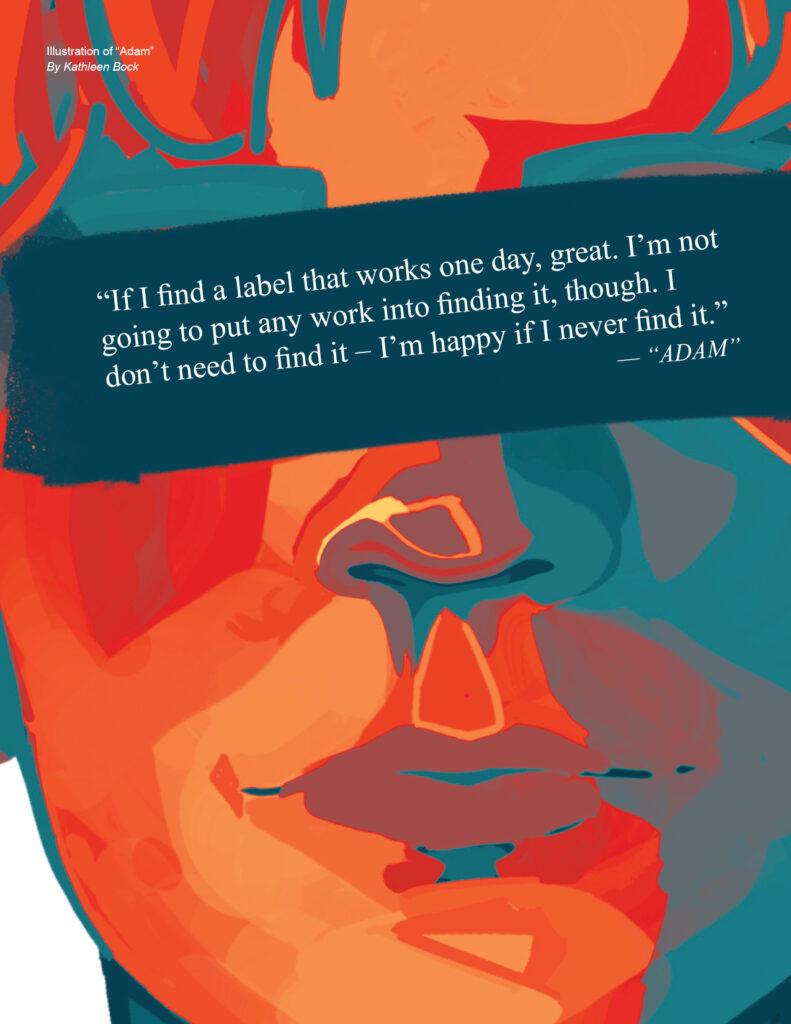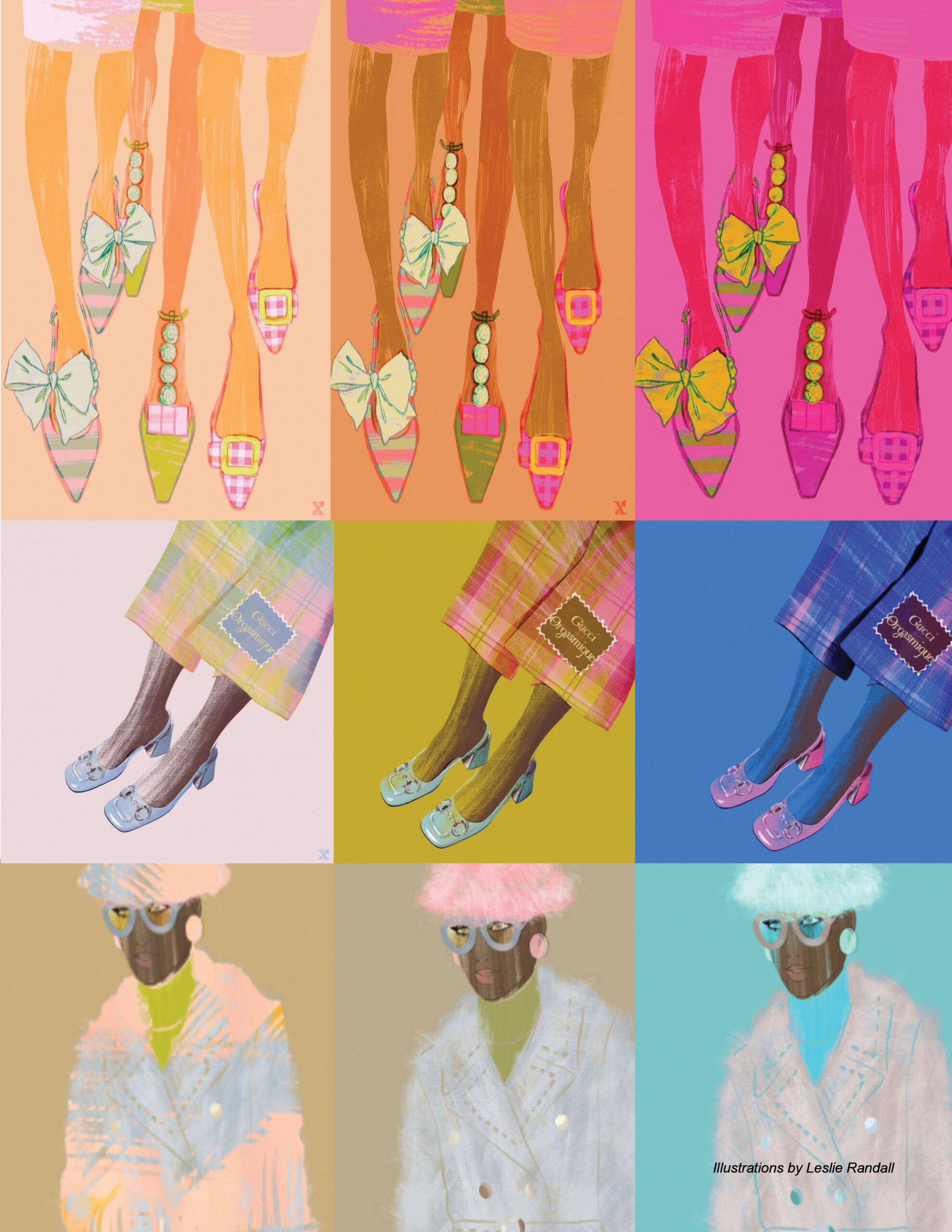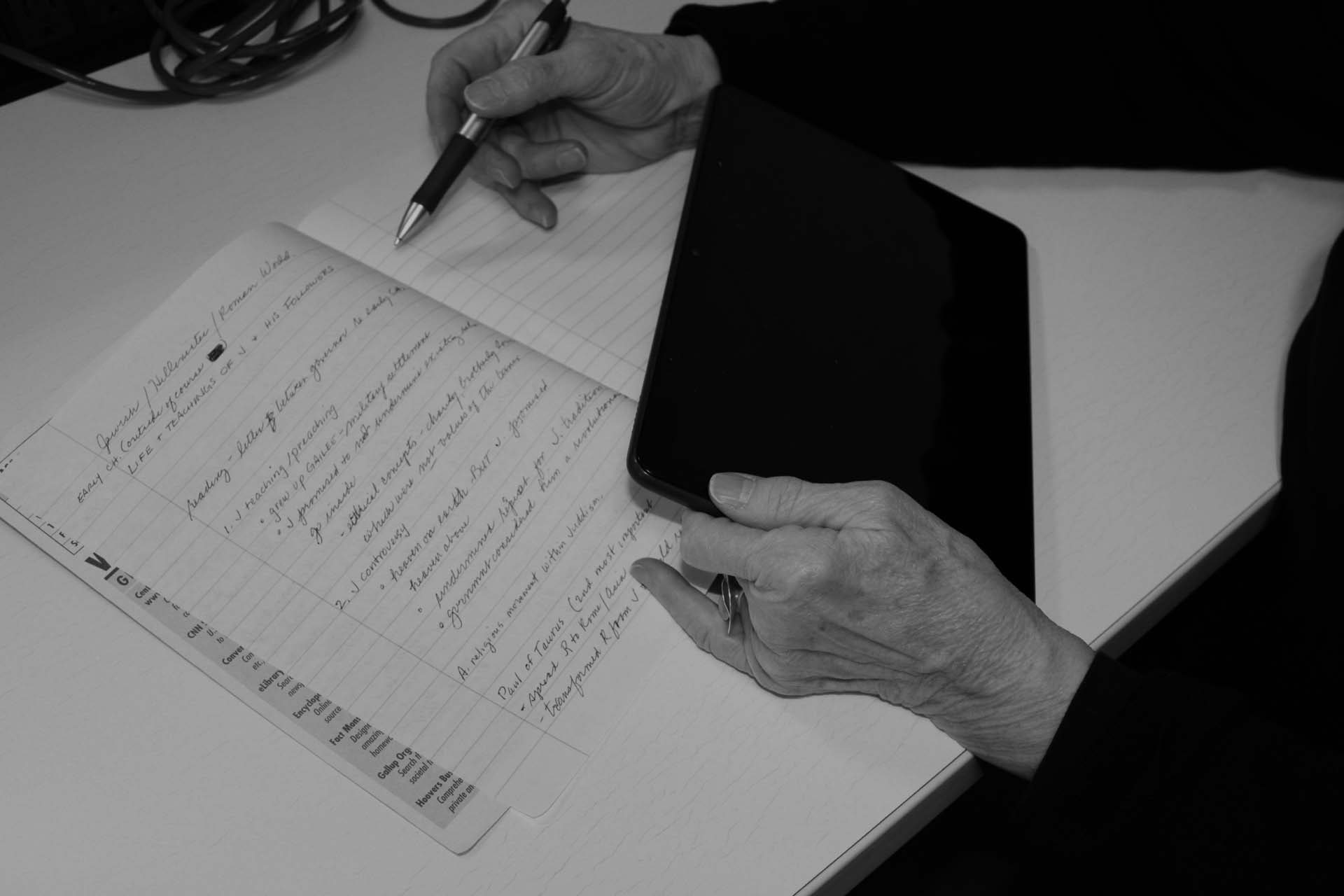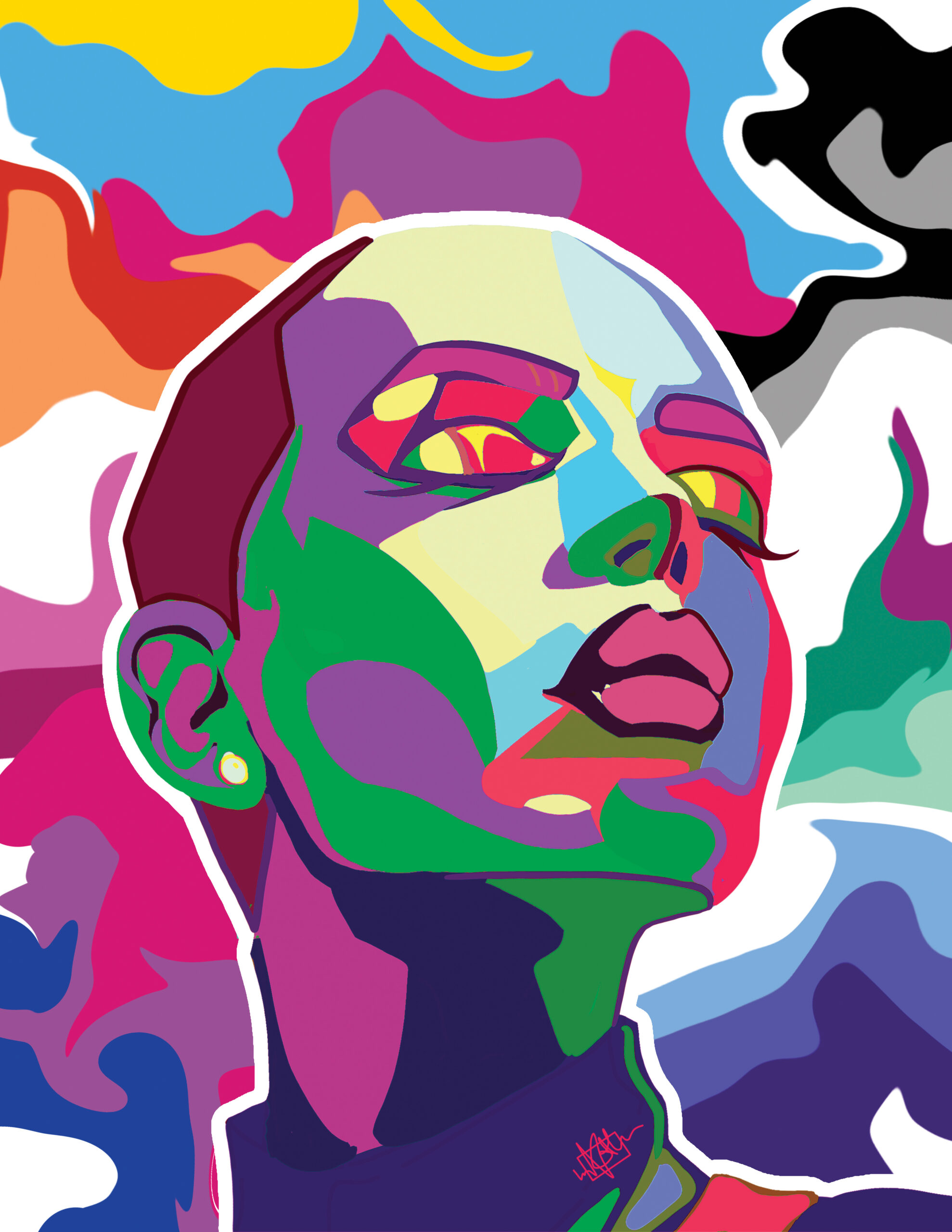
Identity in the Undefined
By Devlin Epding
Color Portrait With Pride Flags. By Kathleen Bock
After coming out as gay to their friends in seventh grade, Aidan Sears was no longer just the nerdy kid watching anime and reading “Dungeons and Dragons” books. They were the sole representative of a community their rural North Dakota classmates were eager to single out.
“Are you a top or a bottom?”
“How does gay sex work?”
“If you want to be gay, you have to be a lot fitter.”
Sears grew up on a farm, but knew they were not the typical “country boy,” preferring theater and music to football and dog shows. Friends understood Sears’ passions to be little more than examples of gay stereotypes, expecting them to be an expert on James Charles and “America’s Next Top Model.”
Due to the social role forced upon them, Sears had the dual responsibility of being a positive steward for the local LGBTQ+ community while also proving they were more than the “little fag” many classmates reduced them to. As a result, Sears drove themself to be “hyper-involved,” joining roughly 14 student groups throughout middle and high school, many of which they became leaders in.
“It was really pushing myself to be the best, because a lot of times, people would refer to me as only a ‘gay person’ in school,” Sears said. “If I become successful in everything, then they can’t just refer to me as gay, they’ll have to acknowledge that I’m good at things.”
LGBTQ+ identification has more than doubled to 7.6% among U.S. adults in the last decade, according to a Gallup poll released in March, largely driven by younger generations. Roughly 10% of millennials and nearly a quarter of Gen Z identify as LGBTQ+.
Even though more people are identifying as queer, social pressures and stereotypes still create a dangerous landscape. Roughly 41% of LGBTQ+ youth in the country seriously considered suicide in the past year, with 14% attempting in the same time period according to data from The Trevor Project, a national nonprofit aimed at preventing LGBTQ+ youth suicide.
As they assimilated into their stereotypical gay role, coming out became more of a constraint than a liberator for Sears. Instead of being free to further explore their identity, being gay was the known, “easier” and at least partially accepted existence.
Even as Sears met others in the LGBTQ+ community, acceptance and exploration continued under the guise of categorization. While Sears knew they were gender-queer and bisexual, pressure from friends to find appropriate labels for themselves led to further stress and self-hatred.
Roughly seven years later, Sears is navigating their second year of college and says they still do not know exactly who they are. But they know they are in a healthier place without the continued pressure to conform. While seventh-grade Sears would be surprised to see themselves still alive, fifth-grade Sears “would love who I am today.”
“I don’t care what I am. Like, I just am who I am,” Sears said. “If I find a label that works one day, great. I’m not going to put any work into finding it, though. I don’t need to find it — I’m happy if I never find it.”
For others, shedding labels altogether is better than expanding them. Adam grew up in Minnesota but left and graduated from college in New York in 2020 before moving to Chicago. Adam agreed to be identified only by a pseudonym because they still have safety concerns. For Adam, figuring out where they fit in the queerspace created more pressure than coming out.

Adam grew up as queer definitions were expanding. Obergefell v. Hodges federally legalized same-sex marriage in 2015, and the national LGBT advocacy organization GLAAD formally added “Q” the following year as a catchall term for everyone in the community.
Despite the move toward more inclusive language, Adam said continuing discussions about people’s fluid identities within rigid categories became oppressive and “stupid.”
“If you asked 100 people how they define ‘queer,’ you would probably get 100 different definitions,” Adam said. “At a certain point, it stops being productive.”
Experiences are blurrier than categorization
Kat Rohn knew they were not cisgender around the age of 10 when the transgender movement of the ‘80s and ‘90s was filled with stories of people either living their lives in the closet or having to tear their lives apart in order to live as their authentic selves.
Rohn wanted more out of their life.
While they did not yet know exactly who they were, categories were a way for Rohn to reconcile with ideas they previously could not put into words — or at least better words than, “I just don’t feel right.”
Categories can often go from a launching point for further exploration to a constraint for people figuring out who they are, Rohn said. Finding community meant finding freedom to explore your identity by seeing which pronouns, hairstyles or clothes felt the most affirming. However, even older generations of queer people tried to protect people from pushing the boundaries of acceptance too far.
“When people initially grab on to a particular identity, it may not always stick,” Rohn said. “As we create more expansive categories, it allows people to ease into identities and make their own decisions about their lives in a way that reflects how people actually see themselves rather than trying to do XYZ because if I don’t, I won’t be validated, accepted or supported.”
Rohn is now the executive director of OutFront Minnesota, the state’s largest LGBTQ+ advocacy group. As someone who came out three times — once to themselves, once to their partner and once publicly — Rohn said finding validation can help queer people overcome points of friction that many cisgender, straight people never have to think about.
“It’s not about fitting into a particular box,” Rohn said. “But when you find your community and you find that sense of self, you’re able to move through the world with more confidence and support in who you are.”
Rick Nelson found that support early in life. The first time Nelson showed any public affection with a man, he was sitting in the back row of a balcony inside the Uptown Theater with a jacket to cover him holding hands with his first boyfriend, Joe.
As a student at the University of Minnesota in 1980, Nelson knew if anyone found out his sexuality, he would be shunned by all his brothers in his fraternity. But Nelson was a good liar. He had long since perfected presenting himself as straight, adjusting his walk and voice, and expending all his energy into being immersed in school activities to avoid bringing attention to his sexuality.
On his first day working in a Dinkytown clothing store, Joe appeared in the empty store, where the two flirted until another customer came in. Joe slid his number to Nelson once the coast was clear.
By the time Nelson completed graduate school, he had begun the process of coming out to friends and family. Unlike Joe, whose family cut him off after he came out, Nelson’s family was relieved he finally made public what they already suspected.
“It was kind of weird, but it was telling people who I was and then walking through the world just assuming that everyone knew I was gay,” Nelson said. “I never really thought about it anymore. I was much more relaxed. I didn’t really give a shit what people thought of me after that… it was incredibly freeing. Highly recommend.”
Nelson still faced discrimination: A co-worker asked if he was playing the Sugar Plum Fairy in a local Nutcracker production during a meeting; people doing double takes after Nelson said he had to drop something off to his partner. The final weight was lifted when he married his longtime partner, Robert.
Now, 24 years into their relationship and 11 years into their marriage, Nelson said nothing has curbed his anxiety like having the confirmation of sharing a life with the man he loves.
“Put your true self out there to the world,” Nelson said. “Don’t put the idea of what you think the world wants you to be. Be yourself. It’s so much better than you can possibly imagine.”



